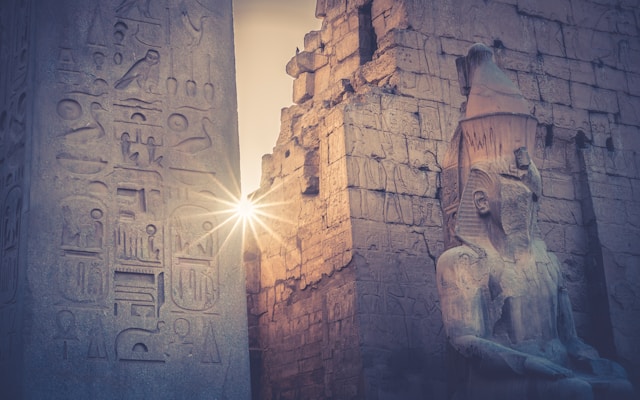If time travel were possible, where would you go? For history lovers, mythology buffs, or cultural adventurers, ancient civilizations are the ultimate destinations for a time machine. These societies laid the foundations of art, science, governance, and philosophy, yet so much about them remains mysterious. Imagine standing in a bustling Babylonian market, watching a Mayan astronomer track the stars, or walking through the golden halls of a pharaoh’s palace.
In this article, we explore 10 ancient civilizations worth visiting if you had access to a time machine—each a rich tapestry of stories, innovations, and mysteries waiting to be uncovered.
1. Ancient Egypt – Land of the Pharaohs
No list of time machine destinations is complete without Ancient Egypt. Flourishing around 3100 BCE, Egypt’s monumental architecture, complex religious systems, and advanced engineering continue to fascinate.
Why explore it?
Witness the construction of the Great Pyramid of Giza
Attend a ceremony at Karnak Temple
Discover the real purpose of the Sphinx
Experience daily life on the Nile Delta
The grandeur of this civilization is more than tombs and mummies—it’s a society that thrived for millennia.
2. Mesopotamia – Cradle of Civilization
Mesopotamia (modernday Iraq) is widely considered the birthplace of civilization. It was home to the Sumerians, Akkadians, Babylonians, and Assyrians, who pioneered writing, law, and urban planning.
Why explore it?
Walk through the legendary city of Babylon
Witness the hanging gardens—one of the Seven Wonders
Read freshly inscribed cuneiform tablets
Observe Hammurabi’s Code being enforced
A journey here would be like flipping through the first pages of human history.
3. Ancient Greece – Birthplace of Democracy and Philosophy
From 800 BCE to 146 BCE, Greece shaped much of the modern world. It was a hub of art, science, politics, and thought. Citystates like Athens, Sparta, and Corinth flourished with distinct identities.
Why explore it?
Attend a debate in the Athenian Assembly
Visit Plato’s Academy or Aristotle’s Lyceum
Watch a live play by Sophocles at a Greek amphitheatre
Join the original Olympic Games in Olympia
This would be the ideal timetravel spot for intellectuals and sports fans alike.
4. Indus Valley Civilization – The Forgotten Engineers
One of the most mysteriously advanced societies, the Indus Valley Civilization (2600–1900 BCE) thrived in parts of modern Pakistan and India. Known for their urban planning, they had sewage systems, standardized weights, and gridlike cities.
Why explore it?
Explore Harappa or MohenjoDaro at their peak
Decode the stilluntranslated Indus script
Understand their economy and trade networks
Observe life in a civilization ahead of its time
This destination would satisfy any archaeological curiosity.
5. The Roman Empire – Builders of the Ancient World
The Roman Empire (27 BCE – 476 CE in the West) was vast, stretching from Britain to the Middle East. Its influence on law, architecture, engineering, and governance remains deeply embedded in modern society.
Why explore it?
Witness a gladiator battle in the Colosseum
Walk on freshly laid Roman roads
Watch the Roman Senate in session
Visit Pompeii before Mount Vesuvius erupts
It’s a civilization that blended brute power with brilliant innovation.
6. The Maya – Masters of Astronomy and Architecture
The Mayan civilization (2000 BCE – 1500 CE) spanned parts of Mexico, Guatemala, Belize, and Honduras. Known for their astronomical knowledge, pyramids, and calendar systems, the Maya remain a mystery in many ways.
Why explore it?
Witness a Mayan ball game
Attend a solstice ceremony at Chichen Itza
Learn from Mayan priests and astronomers
Understand the intricacies of their number system
A time machine visit could unravel secrets about their sudden decline.
7. The Inca Empire – Andean Innovators
The Incas (1438–1533 CE) created the largest empire in preColumbian America. Despite lacking a written script, they had sophisticated systems for communication, agriculture, and governance across mountainous terrain.
Why explore it?
Watch the construction of Machu Picchu
Travel along the original Inca Trail
Learn how quipus (knot records) were used
Observe Incan farming on highaltitude terraces
Timetraveling here would showcase human adaptability in extreme environments.
8. Ancient China – Dynastic Greatness
China’s civilization dates back over 4,000 years, with dynasties like the Shang, Zhou, Qin, and Han laying foundations in philosophy, medicine, warfare, and governance.
Why explore it?
Watch the Terracotta Army come to life during Qin Shi Huang’s reign
Visit Confucius and hear his teachings firsthand
Travel the Silk Road in its infancy
Witness the invention of paper and gunpowder
A visit to Ancient China would illuminate the roots of one of today’s superpowers.
9. The Persian Empire – A Model of Tolerance and Power
The Achaemenid Persian Empire (550–330 BCE) was one of the largest empires of its time, known for tolerance, administrative efficiency, and monumental architecture.
Why explore it?
Tour Persepolis in its prime
Witness the reign of Cyrus the Great
See how Zoroastrianism shaped spiritual thought
Understand the first concepts of centralized government
The Persians set standards for empires to follow, blending strength with diplomacy.
10. The Vikings – Seafaring Warriors of the North
Though often misrepresented, the Viking Age (800–1100 CE) was not just about raids—it was about exploration, trade, and cultural exchange. The Norse reached as far as North America and Central Asia.
Why explore it?
Join a Viking longship voyage
Visit early settlements in Iceland or Greenland
Witness Norse mythology in everyday life
Explore the legal and social systems of Viking society
A time machine journey here offers adventure, discovery, and insight into early globalization.
Conclusion: The Past Is the Ultimate Adventure
If you could travel through time, these ancient civilizations would be unmatched destinations. Each one offers a unique view into how human societies rose, thrived, and in some cases, mysteriously vanished. From the engineering marvels of the Romans to the philosophical debates of Athens, and from the sacred temples of the Maya to the efficient road systems of the Inca, the past is full of wonders we can only dream of experiencing.
While we may not have a functioning time machine—yet—learning about these civilizations brings us one step closer to understanding our shared history. Their legacies continue to shape the world we live in today.
FAQs
1. Why are ancient civilizations worth exploring in theory or imagination?
Ancient civilizations offer invaluable insights into human development, societal structures, technological innovation, and cultural evolution. Exploring them, even hypothetically, enriches our understanding of today’s world.
2. Which ancient civilization is the oldest known to historians?
The Sumerians of Mesopotamia are widely considered the first known civilization, emerging around 4500 BCE with cities like Uruk and Ur.
3. Are there still mysteries about these civilizations?
Absolutely. Many ancient scripts remain undeciphered (like the Indus script), and questions about how massive structures like the pyramids or Machu Picchu were built persist to this day.
4. Which civilization made the most lasting contributions?
It depends on the context. Greece and Rome heavily influenced Western politics and philosophy, while China and the Middle East contributed foundational inventions and mathematics that shaped global development.
5. Can we visit the remains of these civilizations today?
Yes! Sites like the Pyramids of Giza, the Colosseum in Rome, and Machu Picchu in Peru are open to tourists. While we can’t go back in time, these archaeological remains offer powerful glimpses into the past.







